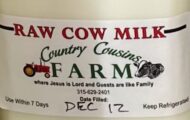The World Health Organization (WHO) has issued a new report on antibiotic resistance (ABR). It details resistance to antibacterial drugs in different parts of the world, along with resistance data on specific pathogens such as the resistance of E. coli bacteria to third-generation cephalosporins and fluoroquinolones. The report outlines the health and economic burden due to antibiotic resistance and looks specifically at antibiotic resistance in food-producing animals and the food chain.
 While antibiotic resistance is growing around the world, WHO says there is no coordinated surveillance effort, which could help monitor the situation and provide clues to fix the problem. The report states that, “major gaps exist in surveillance and data sharing related to the emergency of ABR in foodborne bacteria and its potential impact on both animal and human health.”
While antibiotic resistance is growing around the world, WHO says there is no coordinated surveillance effort, which could help monitor the situation and provide clues to fix the problem. The report states that, “major gaps exist in surveillance and data sharing related to the emergency of ABR in foodborne bacteria and its potential impact on both animal and human health.”
The US is seeing the effects of this growing problem. The Foster Farms chicken Salmonella outbreak, which has lasted more than year and sickened at least 524 people in this country, involves seven outbreak strains of Salmonella Heidelberg that are resistant to several antibiotics. The hospitalization rate in that outbreak is almost triple the usual number because antibiotic resistance can increase the severity of the illness.
Sub therapeutic use of antibiotics in food producing animals is a large part of the issue. And unfortunately, the antibiotics used in food animals and those used to treat people are mostly the same, so resistance that develops in farm animals increases the risk that antibiotics may become useless to treat human infections in the near future.
Bacteria can also develop different mechanisms of resistance, which can be transferred to humans. Food producing animals are reservoirs of pathogens that have the potential to transfer resistance to people. Methicillin-resistant Staphylococcus aureus (MRSA) infections that are very common in hospital settings are related to high density hog farms.
In addition, bacteria with different resistance mechanisms could initially cause a “silent carrier state” and could give rise to infections that aren’t recognized as being of foodborne origin. For instance, methicillin-resistant Staphylococcus aureus (MRSA) infections that are very common in hospital settings are related to high density hog farms. And scientists think that many urinary tract infections caused by E. coli bacteria, for instance, were initially found in food.
The antibiotic resistant surveillance programs that do exist are in Denmark, the U.S., the Netherlands, Canada, Germany, and Japan. Those countries do not coordinate with each other, so they have different protocols and methodology that make sharing information and comparisons very difficult.
WHO states that urgent action is needed to reduce antibiotic consumption in animal husbandry and aquaculture as well as in humans. And WHO recommends that countries work together to develop sampling and testing method that will help clarify the situation and give scientists and doctors a better understanding of how to tackle this growing problem.




